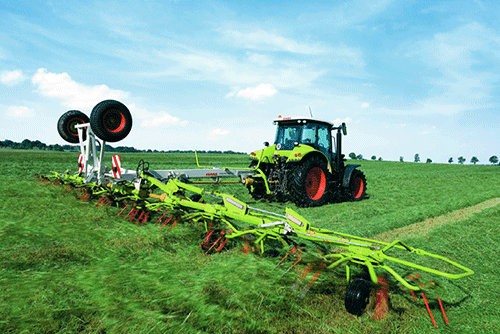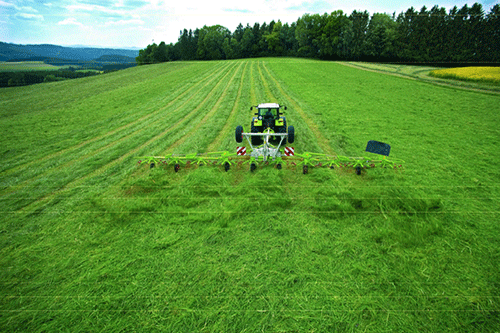
Consider using a tedder to minimize forage drying time
 One of the most important factors in the cuttingand harvesting of forages is minimizing drying time. With the unpredictable weather patterns farmers experience, getting forage crops cut and quickly harvested must be done efficiently.
One of the most important factors in the cuttingand harvesting of forages is minimizing drying time. With the unpredictable weather patterns farmers experience, getting forage crops cut and quickly harvested must be done efficiently.To accomplish this goal, incorporating a tedder into the haying implement lineup is of utmost importance. Spreading out freshly mowed windrows helps evaporate moisture from the crop before a baler takes to the field. The technology designed in modern tedders aims to spread the material evenly with each pass, and prevent damage to the turf.

"The point of the tedder is that it spreads the crop evenly across the mowing width and gives it maximum exposure to the light and air to help it dry down faster," says Matt Jaynes, CLAAS Product Coordinator.
"A tedder will also make forages more consistent. If it's lumped in a windrow, it will be wetter on the bottom than on the top."
Tedders aim to fluff the crop as much as possible without causing damage. This process is done by use of equal-length steel tines that toss the forage but put 25 percent less ash into the crop.
One area that can be problematic is not fully investigating the size of the shaft. While the tedder may appear large and high capacity, the shaft inside could be small and more prone to breaks.

While the end goal of a tedder is the same for all users, the path taken to achieve that goal can vary by operator and crop.
"Some people let the crop shrink after mowing, then ted the field the next morning when there's light dew. Others will ted right after going through with the mower," Jaynes says. "Typically I like to let it sit for a day and then go after it the next morning. That way you will often have maximum leaf retention and the crop will be a little fluffier."
From a crop standpoint, production practices can vary from silage to dry hay. Those harvesting silage ted and then follow with a rake and baler shortly after, as they aim to spread out the crop and dry it down to a desirable level for silage. For those planning to harvest dry hay, it is more ideal to wait until baling day to take a rake through and compile the lower moisture tedded forage.
CLAAS of America Inc. offers a wide variety of technologically innovative hay tool, baler, self-propelled forage harvester and combine harvester products to provide growers optimum performance in the field. These products are designed by a dedicated engineering staff located at numerous worldwide factories focused on the production and design of harvesting equipment. The design, performance and reliability of this equipment have made CLAAS an international market leader. For more information, visit www.claasofamerica.com
05.21.2013